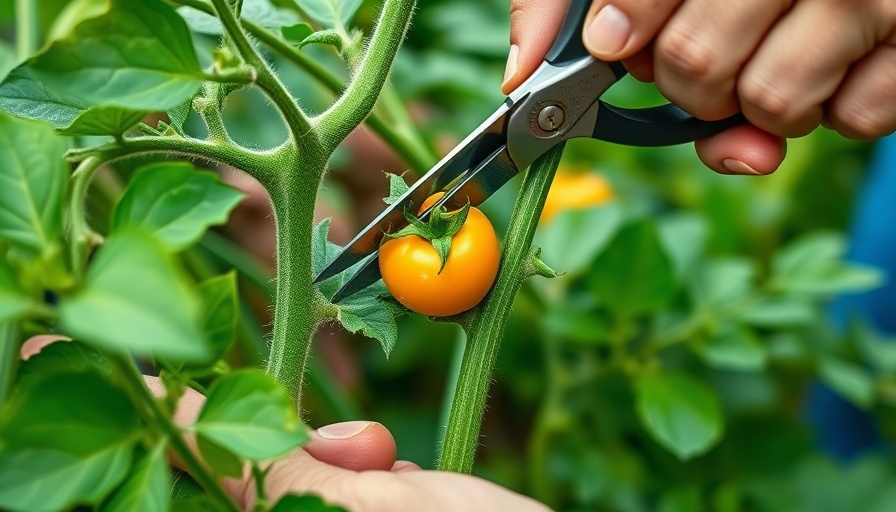
Why Do Tomato Flowers Drop Off?
For many Okanagan gardeners, watching a flourishing tomato plant can feel like preparing for a bountiful harvest. But what happens when those promising flowers suddenly start to fall off? Let's dig into this issue that can frustrate even the most experienced gardeners and explore the possible reasons behind it.
In 'Tomato flowers falling off?', the discussion dives into common issues faced by tomato gardeners, exploring key insights that sparked deeper analysis on our end.
Understanding Plant Stress and Its Impact
One of the main reasons for tomato flower drop involves stress factors affecting the plant. Tomatoes are sensitive to environmental changes like heat, humidity, and even watering issues. When a tomato plant experiences too much heat or fluctuates between very dry and very wet conditions, it can lead to flower drop.
For instance, if temperatures soar above 90°F during the day and do not cool significantly at night, the plants might struggle to adapt. They enter a survival mode, sacrificing their flowers for energy, which could be directed towards keeping the remaining parts of the plant alive.
Pollination Challenges
Another significant factor contributing to flower drop is inadequate pollination. Tomatoes are self-pollinating, but they rely on gentle vibrations from the wind, or even bees, to successfully distribute pollen. If a garden doesn’t seem to attract pollinators or if weather conditions are unsuitable (like excessive humidity), the flowers may not develop fruit and eventually fall off.
Gardeners can help their tomato plants by gently shaking the flowering branches or using a soft brush to simulate the movement necessary for pollination. This simple technique can make all the difference!
Optimal Conditions for Thriving Tomato Plants
Creating the right growing conditions is essential for preventing flower drop. It starts with the proper planting location—tomatoes love well-drained soil, plenty of sunlight, and stable temperatures. Make sure you’re providing at least six to eight hours of sunlight each day, while also ensuring consistent moisture without waterlogging the soil.
Regular inspections of your plants help. This practice ensures you notice any signs of stress or disease that could propagate further issues down the line.
The Role of Nutrition and Fertilization
What your tomato plants eat can also affect their health. If they lack essential nutrients, particularly phosphorus and potassium, they may have trouble producing flowers or keeping them intact. A balanced fertilizer tailored for tomatoes can work wonders. Look for products that are specifically formulated for fruiting and flowering plants.
However, beware of over-fertilizing! Too much nitrogen can encourage lush greens at the expense of flowers—results that might not only disappoint but can also lead to dropping blooms.
Common Misconceptions and Myths
Some gardeners write off flower drop as a natural occurrence, but it's essential to recognize when it's more than just a minor setback. A common misconception is that dropping flowers mean the plant is unhealthy when, more often than not, external factors like temperature and care choices are to blame. Understanding these issues ensures you can take corrective actions before your tomato plants face severe setbacks.
Steps to Counteract Flower Drop
To boost your tomato plants' chances, consider integrating the following steps into your gardening routine:
- Regularly monitor and adjust watering schedules based on soil needs.
- Ensure optimal spacing between plants to allow for air circulation.
- Consider mulching to help maintain soil humidity levels.
- Provide shade during peak heat if necessary.
- Encourage beneficial insects and pollinators in your garden.
Final Thoughts on Tomato Flower Care
In summary, tomato flower drop can be attributed to various factors ranging from environmental stress to nutritional deficiencies. Understanding these elements empowers Okanagan gardeners to intervene early when problems arise, ensuring a flourishing harvest throughout the growing season. Embracing adaptability and learning from challenges will undoubtedly lead to a better gardening experience.
This growing season, keep a keen eye on your tomato plants, and remember, with the right care and understanding, your efforts may blossom beyond expectations!
 Add Row
Add Row  Add
Add 




Write A Comment